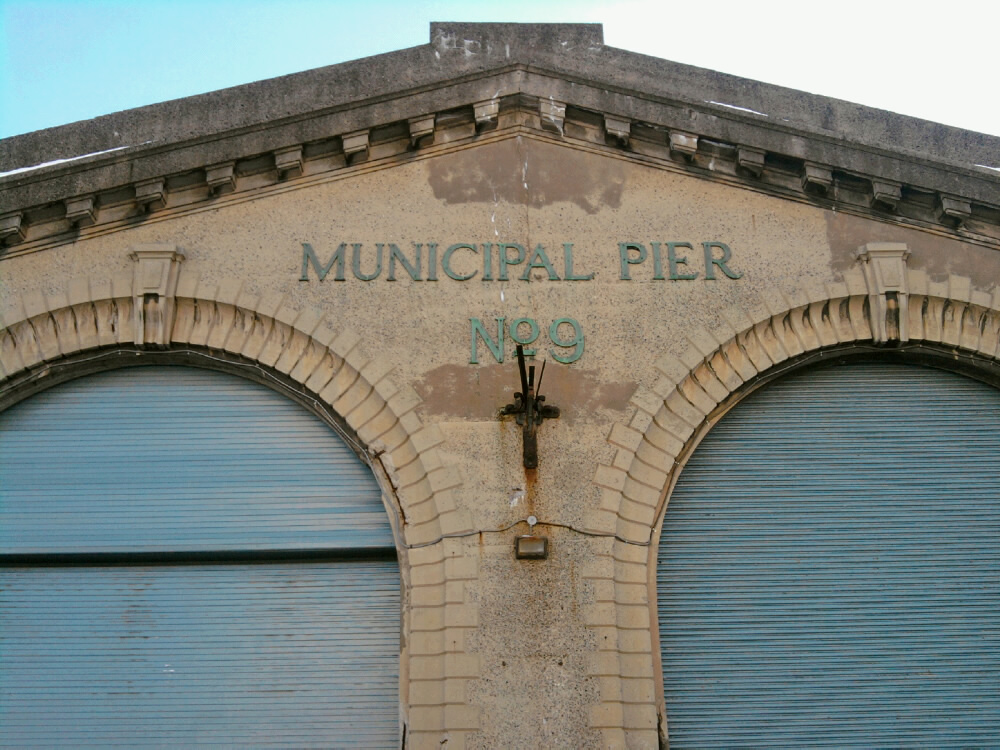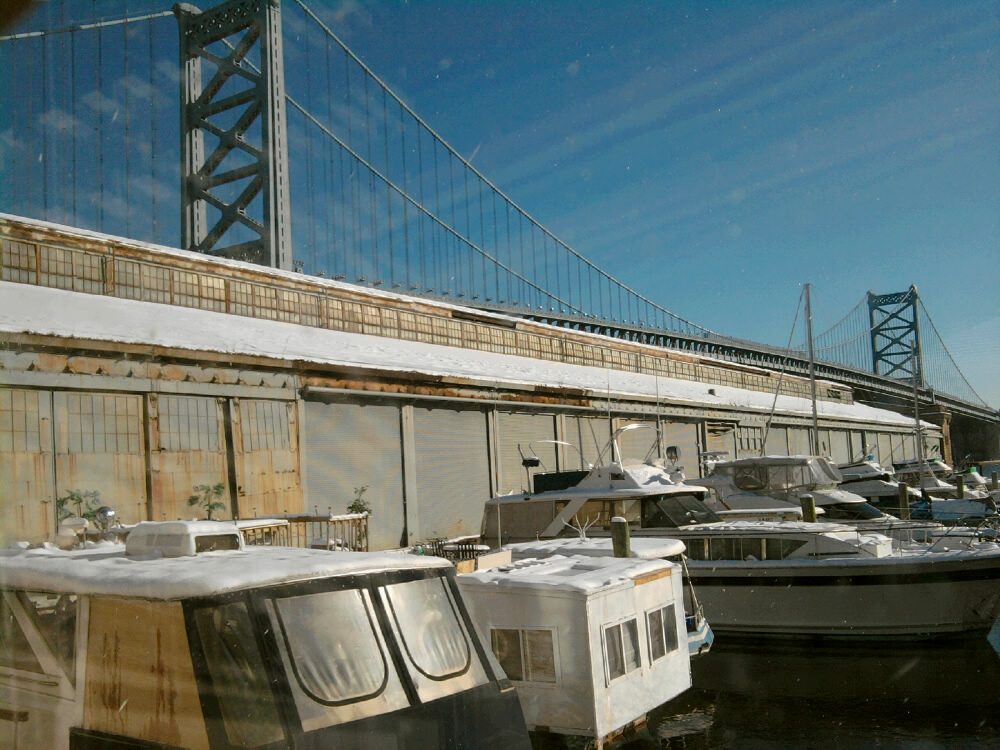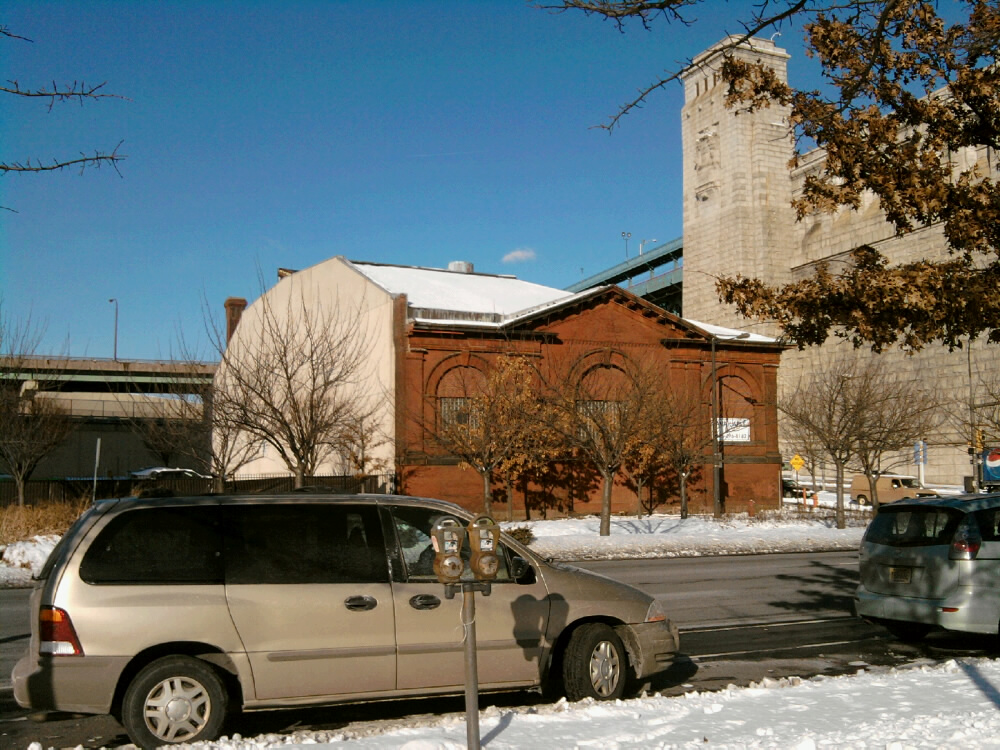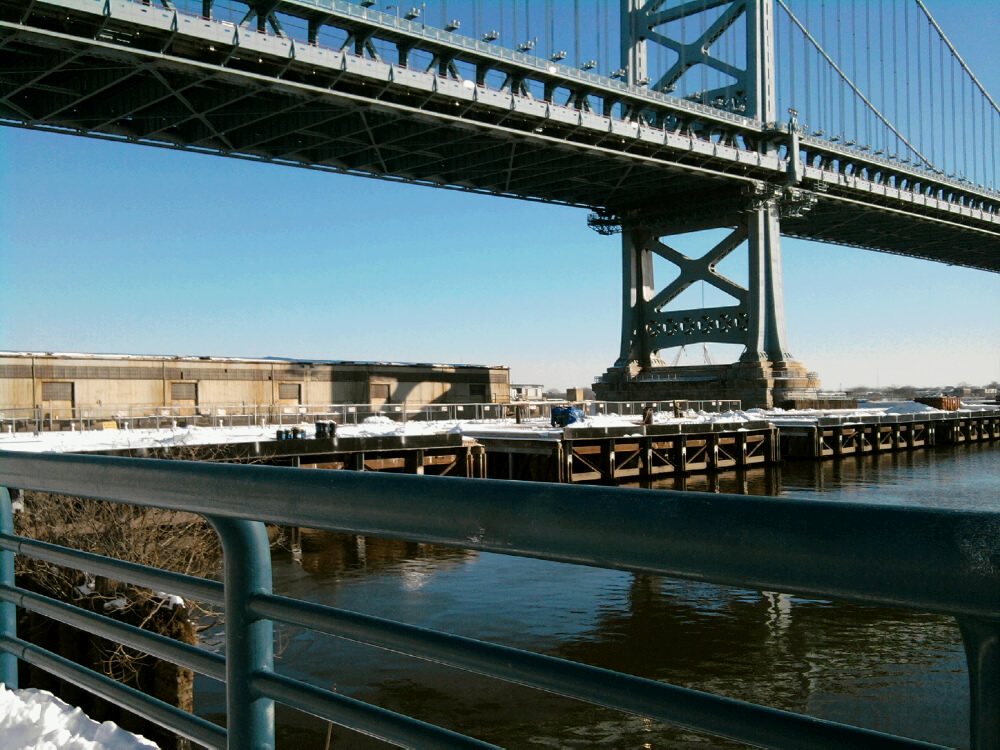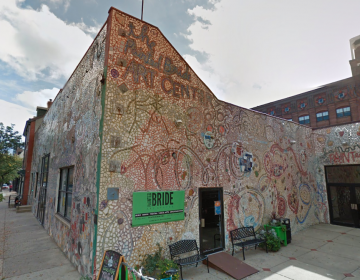Waterfront Corp. pleased with “heat island” of development near Race Street Pier
With Race Street Pier scheduled to open as a new park this spring, a plan to create a live arts venue with a restaurant in a former pumping station across the street, and the intent to soon solicit ideas to revamp Pier 9, members of the Delaware River Waterfront Corporation’s executive committee are feeling good about what’s happening on this part of Delaware Avenue.
“We are building some exciting features,” said DRWC President Tom Corcoran. “With the Pier, the Race Street Connector, and the Fringe Festival, it’s a real heat island of activity.” Board member and Penn Design School dean Marilyn Jordan Taylor said she was recently reviewing a progress report on the master plan, and “I was impressed, even though I’ve been a part of it.”
The Race Street Pier project is the furthest along. The plan for the rebar that will serve as the foundation of the elevated portion of the park – the sky promenade, is expected to be approved this week, said DRWC Vice President for Operations and Development Joe Forkin, and then work will begin in earnest. So far the project is on time and on budget, Forkin said, “we’re just hoping that we don’t get that much more snow this winter.”
Last week, DRWC, the city and the William Penn Foundation announced a $5 million grant for riverfront projects. “This award from William Penn could not possibly be bettered timed,” Taylor said. She said the infusion of money shows the “validity” of the still-in-the-works Master Plan for the Central Delaware. While the plan isn’t finished, the projects that have already been completed – Washington Avenue Green and a portion of the multi-purpose trail – and the activity on and around Race Street Pier were identified as “early action” items, designed to show the public this plan was different from those sitting on shelves somewhere. And the $5 million infusion, plus another $1.3 million from the state, provides money to keep the momentum going, DRWC members said.
For example, some of that grant money will be used for the Race Street Connector project – an art, lighting and landscaping plan designed to encourage people to take Race Street under several overpasses and down to the waterfront. Sketches for the first phase of the connector project – the part that focuses on pedestrians and bicyclists – are expected in mid-February, Forkin said.
Along the path of the connector and across Delaware Avenue from Race Street Pier sits a red brick building that was once a pumping station. The city has approved its sale to the Philadelphia Live Arts/Philly Fringe Festival, and the organization plans to turn it into a venue for live performances and workshops, and also have a restaurant/outdoor cafe, Corcoran said.
DRWC Chairman Donn Scott asked when this might happen. Board member Jay Goldstein said it would take awhile because of the work that will have to be done inside to convert the space. In an earlier conversation with PlanPhilly, Forkin said that much of the interior is taken up by huge pipes from the pumping station days. Corcoran said he’s been told the organization hopes to open in spring or summer of 2012.
Back on the east side of Delaware Avenue, the future of the pier next door to Race Street – Pier 9 – has yet to be determined, but DRWC today approved spending $106,000 to do critical repairs to the monitor roof. Unlike Race Street Pier, formerly called Pier 11, Pier 9 has a structure on it – a tall, rectangular building with a smaller rectangle full of industrial-looking windows perched atop it. That smaller rectangle is the monitor roof, also sometimes called a clerestory.
Forkin said the DRWC staff investigated doing a complete re-do of the building’s entire roof, but that would have cost between $500,000 and $600,000. So instead the recommendation was to invest in a stop-gap measure. Goldstein asked if even that much should be done before the future use of the building was determined. Forkin said that it is possible that the future of the building might require an overhaul of the roof – if a different type of ventilation system was needed, for example. But he said the situation was serious enough that action had to be taken immediately. When it gets windy, pieces of the roof blow off. Scott said he has seen letters from people who store their boats in the nearby marina, saying they’ve found pieces of the roof on their boats.That was enough for Goldstein, and the board approved the expense.
Scott said he considered these repairs an “investment,” but “we ought to have a vision for how we use this structure in the future.”
Taylor reminded the group that the firm that did the design for Race Street Pier and the connector also looked at the uses for Pier 9, and it was determined that the structure should not be torn down, but could be used for events, restaurants, farmers markets, or other things that would support Race Street Pier park.
A more concrete study is coming, Corcoran said. A portion of the William Penn money will be used to hire a firm to come up with use and design for the space, with the RFP going out “within several months.”
The marina near Pier 9 is privately owned, but the DRWC owns one farther south on the river, near the Independence Seaport Museum. The board approved spending up to $750,000 to pay A&P Construction to remove the docks, dispose of them, and dredge the marina. The approved bid also OKs paying for the dredging at a rate of $35 per cubic yard. Money is already in the capital budget to make approximately $2 million of improvements to the electrical system and amenities, but that contract needs to be re-bid, Forkin said, because the bids received contained errors.
The dredging will take two or three weeks to complete, Forkin said, and it must be done soon. Dredging is prohibited between March 15 and June 15, when fish spawn. The entire project is expected to be finished by May, in time for boating season.
The DRWC’s energy is now focused on the master plan document itself. It was originally going to be released in February, but the master planners asked the design team for more detailed work on some portions of it, so the contract was extended, Taylor said. The design team will finish its work by Feb. 23, she said. After that, input will be sought from the DRWC board and other stakeholders and feedback will be given to the master planners, Taylor said. The proposed plan will be presented to the public some time in April.
The board also discussed current and future events along the waterfront. DRWC Vice President for Marketing and Programming Jodie Milkman reported that the Blue Cross River Rink is having a terrific season. So far, more than 6,000 skaters have used the rink compared to this time last season, she said. There has been an increase in rink use both during the week and on weekends, she said. After the first 6 weeks of operation for the 2010-2011 season, Rink weeknight admissions are up 31.67%, and overall admissions are up 24.6 percent, reports Laurie Heinerichs, DRWC’s director of marketing. The rink is open 7 days a week through March 6. These statistics refer to skaters only – admission is only charged to those who get on the ice.
Milkman said that DRWC is working with a similar organization in Camden to raise money for a fireworks display on July 4th weekend – either on the 2nd or the 3rd. The city is focusing its fundraising efforts on the fireworks display over the Art Museum steps, she said. Once that is funded, they will turn their attention to the waterfront, she said, but they want to fund waterfront fireworks for the last weekend in June. Milkman said the public expects fireworks the weekend of July 4th. Board member Ellen Yin agreed. “One year, there weren’t fireworks and people were walking up and down the street, looking out at the water,” she said.
Milkman said businesses that lease space from the DRWC, including the Hyatt and Moshulu, have already called asking about the fireworks, as they like to plan events around them.
The New Years Eve fireworks were very popular this year, Milkman said, at least in part due to the warmer than usual weather. Yin, who owns the restaurant Fork, said that people on the street were talking about the first (6 p.m.) fireworks display. Milkman said the first show has come to be expected, and is now popular with both families and adults who aren’t into the midnight scene.
It costs about $75,000 to produce a fireworks show, she said, and that doesn’t include the publicity for it.
Reach the reporter at kgates@planphilly.com.
WHYY is your source for fact-based, in-depth journalism and information. As a nonprofit organization, we rely on financial support from readers like you. Please give today.



